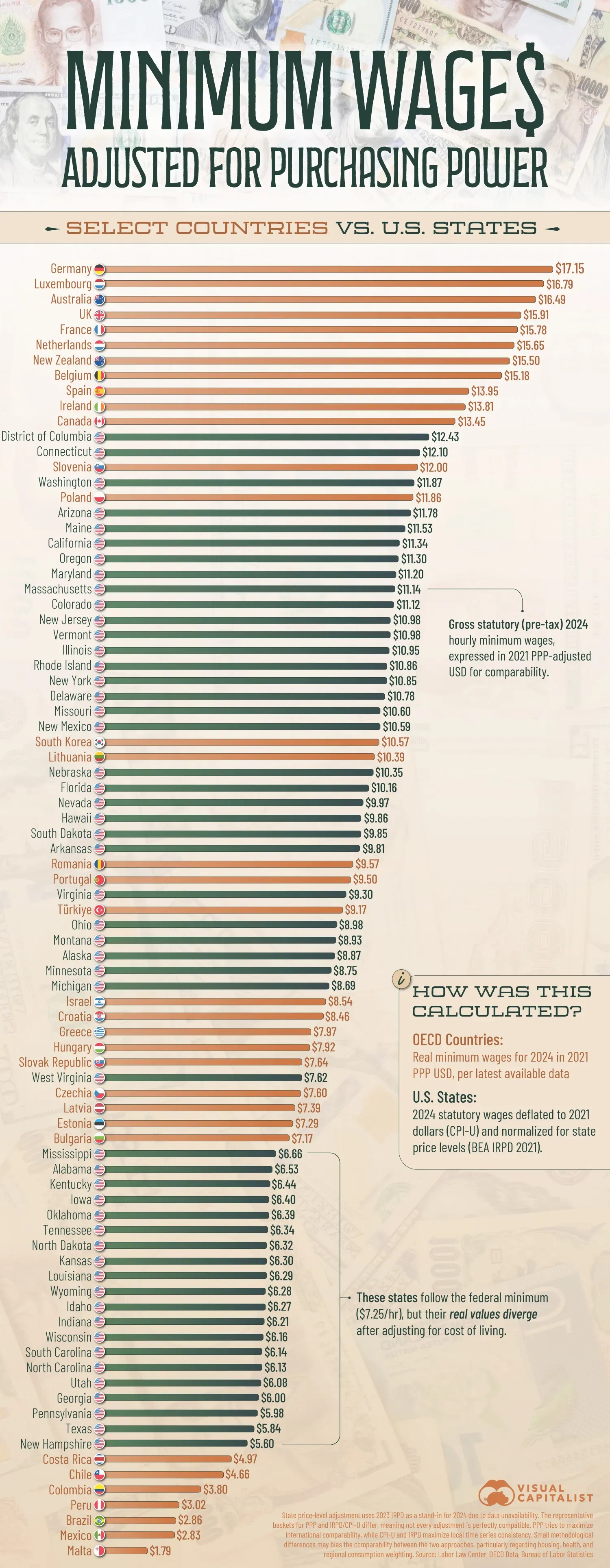👀 This is the Real Minimum Wage in High-Income Countries and All U.S. States (Tap to Expand)

Key Takeaways
- After adjusting for inflation and price differences, statutory minimum wages in leading high-income economies—including Germany, Australia, and France—are higher than all U.S. states
- Under the same metrics DC, Connecticut, Washington, and Arizona have the highest statutory minimum wages in the States.
- States with the federal minimum wage (which hasn’t moved since 2008), cluster at the bottom end of this ranking, closer to upper-middle-income economies like Colombia, and Peru.
- While in nominal terms they’re all at $7.25/hour, their real values diverge after adjusting for cost of living.
- Importantly, these are gross (pre-tax, pre-tips) statutory figures. European taxes tend to be higher than the U.S. states, and tipping culture is mostly absent, which may affect actual take-home income.
🤔 How was this metric calculated?
OECD 2024 minimum wage data was available at source in PPP-adjusted 2021 USD. See the sources for links to their methodology.
To put wages on an equal footing with U.S. states, nominal statutory minimum wages for 2024 were deflated to 2021 USD (using CPI-U from the FRED), and then adjusted for local price differences using the Bureau of Economic Analysis' IRPD.
As a result, both datasets are broadly comparable, but differences in underlying assumptions and price baskets mean they’re best used for rough purposes rather than high-precision analysis.
This is because PPPs are meant for international comparison of living standards and price levels. Meanwhile, CPI-U/IRPD focuses on consistency over time within the U.S., and IRPD reflects U.S. regional consumption differences.